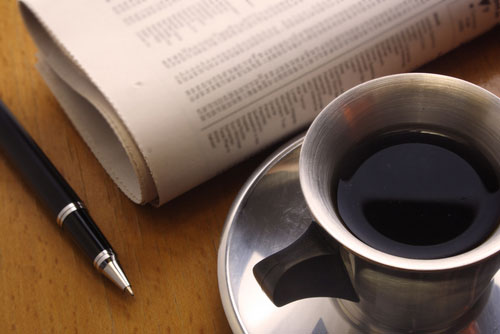Some time ago I wrote admiringly of Hollister Disposal’s
one-step recycling capability, wherein we are spared not only
special trips to a distant recycling center but are also spared the
chore of dividing recyclables into separate bins for paper, plastic
and glass.
Some time ago I wrote admiringly of Hollister Disposal’s one-step recycling capability, wherein we are spared not only special trips to a distant recycling center but are also spared the chore of dividing recyclables into separate bins for paper, plastic and glass.
Some communities, in fact, can still only recycle newsprint, instead of almost every type of paper accepted by our local service.
The recent upswell in attention to the health of the planet has made me think some more about recycling. That, and the news item I saw about a guy who had saved all his garbage for a year in his living room.
This was not a deranged recluse, but an articulate fellow who had composted all his food leavings, leaving him with sacks and stacks of clean food containers, bottles and other debris that most of us throw away.
His point in this exercise was to illustrate that there really is no “away.” Everything goes somewhere, in his case next to the sofa. In our case, the refuse we don’t recycle or compost goes to the John Smith landfill, and if you have ever been there you know that the mountains of stuff aren’t going anywhere else anytime soon.
This is not to find fault with the landfill or the people who run it. But I do want to suggest that it may be time to give more thought to our own contributions to those mountains.
Our county was built by people who made their living from the land, and who appreciated living from it and near it. Can we use this heritage to turn around the way we create and handle “trash?”
One way that comes to mind is the – perhaps unintended – consequence of the Free Lance going to a two-day-per-week printed edition. If the Web site lives up to its promise, the news will still be available every day, just not in the form of 20 pages of newsprint. I don’t know all the figures, but that’s cutting newsprint use by about 60 percent right there.
People make jokes about their grandmothers washing and re-using aluminum foil, but I bet there are still plenty of thrifty ranch families, and others, who think it is a smart idea. I’ve noticed that most of what goes in our trash, and not the recycling bin, is food packaging.
Can we buy foods that are less elaborately packaged? Can we exert pressure on local food industries to use even less packaging? I don’t know what would be less packaging than the cellophane bag around lettuce, but I didn’t see the iPod coming either.
Lots of us recycle successfully at home, but have less incentive and opportunity at work. What if every business appointed a smart, energetic person to do a recycling audit of the workplace to see what could be improved? Where I work, the H.R. administrator recycles plastic bottles from the lunch room and uses the cash she receives to buy M&Ms for all to share. But hundreds of bottles from individual departments go uncollected every day.
In the meantime, check out Hollister Disposal’s Web site. I was surprised to learn what can be recycled here: almost every type of plastic, for example. You may get some valuable ideas to help you throw less and less “away.”










